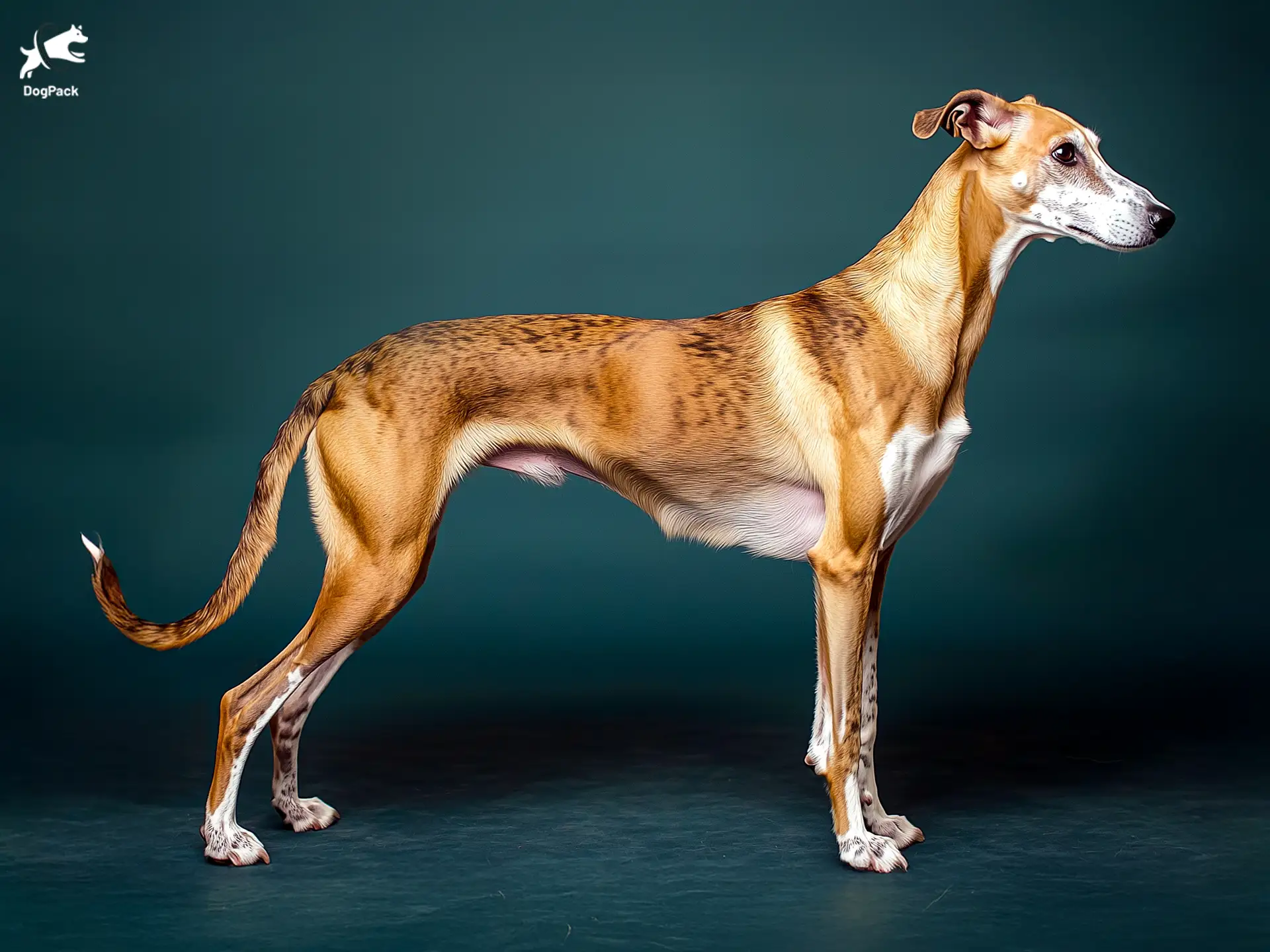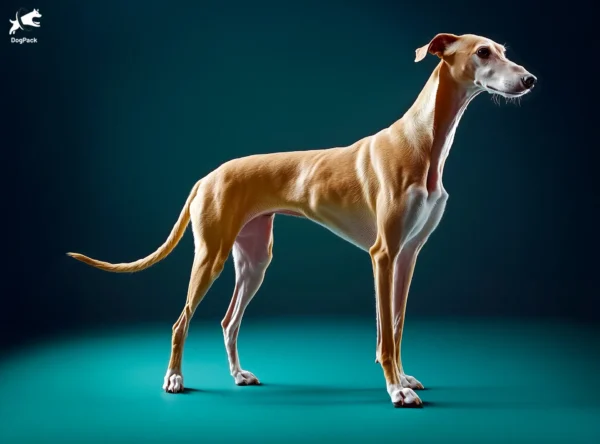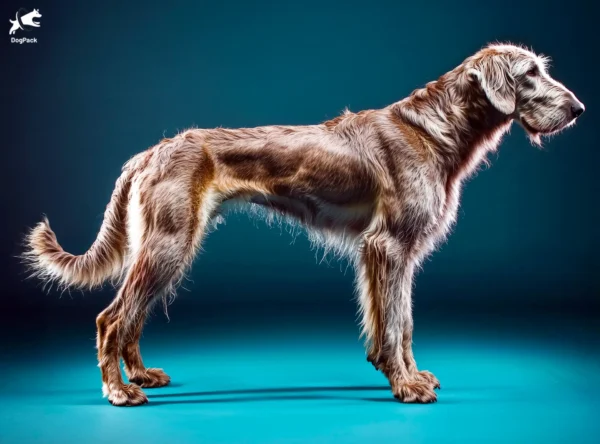Polish Greyhound Dog Breed Info & Overview
The Polish Greyhound, also known as the Chart Polski, is a swift and noble sighthound from Poland. Prized for its hunting prowess and elegant build, this breed stands out for its strength and agility. Their lean physique, coupled with a warm yet dignified demeanor, makes them both a striking presence and a faithful companion.
Characteristics
Pictures
Breed History
The Polish Greyhound traces its lineage back to ancient sighthounds once favored by Polish nobility for coursing and hunting. Over centuries, they adapted to varied terrains and climates, developing a reputation for resilience and speed. Despite shifting times, these regal dogs retained a distinct appearance that makes them instantly recognizable among other greyhound-type breeds.
Chart Polski enthusiasts often share tales of these dogs’ bravery in chasing hares and sometimes even wolves. Centuries ago, the breed symbolized status and prestige in Polish society, and noble families prized them for their powerful build. Yet, throughout political upheavals in Eastern Europe, the breed’s survival sometimes hung in the balance.
By the 20th century, concerted efforts by dedicated fanciers helped preserve the breed’s purity. Today, Polish Greyhounds remain relatively rare outside of their homeland. However, a small but passionate community continues celebrating and safeguarding this remarkable hound’s heritage.
Temperament, Personality
Polish Greyhounds are famously self-assured yet affectionate with those they trust. In the home, you’ll find them quietly observant, showing bursts of playfulness when they sense a friendly invitation. While they may not smother you with attention, they form deep bonds over time and show unwavering loyalty.
They’re known for a naturally reserved demeanor around strangers, which means early socialization is key. With consistent positive experiences, they can learn to be polite—though rarely overtly friendly—towards unfamiliar faces. This stoic charm endears them to owners who appreciate a calm but sensitive companion.
When it comes to children and smaller pets, supervision is essential. Although they’re not typically aggressive, their powerful sighthound instincts can kick in, especially during fast-moving games. Proper introductions and guidance help them integrate seamlessly into various family environments without losing their unique character.
Physical Characteristics
Lean and athletic, the Polish Greyhound presents a muscular build beneath a smooth coat. Their deep chest, long legs, and slender waist reflect a design meant for speed over open terrain. When they take off sprinting, you see the culmination of centuries of selective breeding for agility and endurance.
Although they have a greyhound-like silhouette, these dogs tend to be more robust, featuring a broader head and stronger jaw. Their coat can come in various colors, including fawn, brindle, or black, sometimes combined with white markings. The fur is short but dense, protecting them against cooler temperatures more than many other sighthounds.
Their eyes, typically dark with an alert expression, signal the breed’s keen intelligence. Tall, curved ears rest close to the head, adding to their streamlined look. Overall, the Polish Greyhound moves with poised confidence, turning heads whenever they’re out on a brisk run or relaxed stroll.
Health Issues
Polish Greyhounds are generally healthy, but like many purebreds, certain genetic conditions occur. Hip dysplasia can affect mobility over time, so routine vet exams and early detection are vital. Additionally, some lines may experience heart issues, underscoring the importance of thorough breeder health screenings.
Bloat (gastric torsion) is another condition to watch for, as these deep-chested dogs can be more susceptible. To reduce the risk, many owners schedule smaller, more frequent meals and limit vigorous exercise right after eating. A watchful eye and prompt medical attention help prevent severe complications.
Regular check-ups and a tailored wellness plan go a long way in keeping your Polish Greyhound in peak shape. You can find helpful veterinary insights at UC Davis Veterinary Medicine and PetMD for deeper reading on canine health.
Grooming Needs
While their smooth coat is relatively low-maintenance, they do benefit from weekly brushing to remove loose hairs and maintain a healthy sheen. This routine not only keeps shedding manageable but also gives owners a chance to check for any skin irritations or ticks—especially if they’ve been exploring the great outdoors.
Baths should be given on an as-needed basis, typically every couple of months, unless they get particularly dirty. A gentle, dog-friendly shampoo helps maintain coat integrity and avoids stripping natural oils. Because Polish Greyhounds are still active hunters at heart, you might find the occasional patch of mud clinging to their lean frame.
Nail trims, ear checks, and regular dental care are essential to round out the grooming routine. Consistent upkeep helps them look and feel their best without too much fuss. Their short coat makes them fairly user-friendly compared to some other large dog breeds.
Exercise Requirements
Polish Greyhounds aren’t content with just a stroll around the block; they thrive on bursts of speed and room to run. A good daily routine can include a brisk walk coupled with short sprints in a secure area. They excel in lure coursing, a sport that mimics the chase they were born to love.
Variety keeps them mentally engaged and channels their energy in a positive way. Puzzle toys, tracking games, or even brief intervals of fetch ensure they don’t become bored. That said, be mindful of their strong prey drive around smaller animals—off-leash activities are safest in enclosed, well-fenced spaces.
They balance periods of high activity with long naps, making them more adaptable than some might assume. With consistent, structured exercise, they remain calm indoors and show that trademark composure sighthounds are known for.
Training Tips
Training a Polish Greyhound rewards patience and creativity. They’re intelligent but can be somewhat independent, so short, varied sessions often yield the best results. Using treats or praise as positive reinforcement encourages them to engage with tasks rather than resist or grow bored.
Socialization should start early, exposing puppies to different sights, sounds, and people. This fosters confidence and helps them handle novel situations without anxiety. However, keep in mind that harsh corrections can cause them to shut down, damaging trust.
A reliable recall is crucial given their prey drive. Investing time in teaching them to return on command, even amid distractions, can prevent a sudden dash after wildlife. Overall, training should be a fun, interactive endeavor for both dog and owner.
Nutrition, Diet
A healthy adult Polish Greyhound typically does well on a high-quality diet formulated for active sighthounds, consisting of around 25% protein and moderate fat levels. Daily caloric intake often ranges between 1,400 and 1,700 calories, though this can vary based on factors like age, metabolism, and activity level.
Most owners opt for two meals per day—morning and evening—to help reduce the risk of bloat. Some breeders recommend a specialized kibble designed for large, deep-chested dogs, while others may incorporate raw or lightly cooked meats. Ensuring balanced vitamins and minerals is key to maintaining muscular health.
Monitoring weight and body condition is essential, as Polish Greyhounds can fluctuate if their exercise routine changes. Adjust meal portions accordingly, and consider consulting a canine nutritionist or vet for detailed guidance tailored to your dog’s individual needs.
Adoption, Breeders
If you’re seeking a Chart Polski, take time to connect with reputable breeders who prioritize health and temperament. This rare sighthound isn’t commonly available, so joining owner communities like the Chart Polski Facebook Group can help. Members often share insights on breeders, upcoming litters, and even rehoming opportunities, offering a solid starting point for your search.
Responsible breeders should provide health clearances for both parent dogs, particularly for hip dysplasia and cardiac issues. Ask for documentation, meet the dogs if possible, and request references from previous buyers. A reputable breeder won’t rush the process—they’ll ask about your lifestyle and experience to ensure a good fit. Building a relationship with a knowledgeable breeder benefits both you and the dog.
Adoption is also a meaningful option, though rarer for this breed. Some Chart Polski may be rehomed if previous owners underestimated the breed’s needs. Reach out to breed clubs or sighthound-specific rescues, and monitor community groups for leads. Whether adopting or buying, choosing a trusted source gives your future companion the best chance at a happy, healthy life in your home.
Family Pet?
With proper socialization, Polish Greyhounds can adapt well to family life. Their calm indoor nature allows them to rest peacefully alongside children who respect boundaries. However, due to their strength and size, supervision is vital around very young kids, especially when play escalates.
They typically get along with other dogs if introduced properly, but smaller pets—like cats—may trigger their chase instincts. Early training can moderate these impulses, yet it’s prudent to remain cautious. When integrated thoughtfully, they’ll thrive in a home offering consistent affection and structured routines.
Families who enjoy outdoor adventures often find these dogs wonderful companions. Their quiet grace indoors contrasts with their bold athleticism outside, striking a balance that appeals to owners seeking both elegance and energy in a pet.
Right For You?
If you live an active lifestyle, appreciate a dignified companion, and don’t mind a strong prey drive, a Polish Greyhound may fit seamlessly into your home. They flourish when they can exercise regularly and lounge in comfort afterward, making them ideal for those who enjoy a mix of outdoor pursuits and quiet evenings.
Owners should be prepared to invest time in socialization, training, and careful introductions with smaller creatures. This breed’s inherent reserve adds a touch of mystique, which appeals to fans of more independent dogs. If you’re eager for a loyal, athletic canine that’s a bit off the beaten path, consider the regal Chart Polski.
Conclusion
Polish Greyhounds are graceful, powerful sighthounds whose storied heritage remains evident in their poised confidence and lightning-fast sprints. Though rare, they reward dedicated owners with unwavering loyalty, a calm household presence, and an enchanting reserve that reveals itself over time. If you’re excited by a dog that blends athletic elegance with quiet devotion, the Chart Polski might just be the ideal companion for your lifestyle.
FAQs
-
How is the Polish Greyhound different from the Greyhound or Sloughi?
The Polish Greyhound is heavier, more muscular, and slightly more rugged than the English Greyhound. Compared to the Sloughi, it’s less refined but more robust, with a protective instinct and a distinct rolling gait when walking.
-
Does the Polish Greyhound make a good farm or rural property dog?
Yes, the Polish Greyhound excels in rural settings, where it can safely roam large spaces and alert to intruders. While it’s a sighthound, its guarding tendencies make it a rare blend of hunter and watchful farm companion.
-
Can the Polish Greyhound tolerate colder climates better than other sighthounds?
The Polish Greyhound has a denser, harsher coat than most sighthounds, offering moderate cold tolerance. It can handle Eastern European winters better than a Greyhound, though shelter and warmth are still essential in freezing conditions.
-
Is the Chart Polski recognized by major kennel clubs?
Yes, the Chart Polski is recognized by the Fédération Cynologique Internationale (FCI) and national kennel clubs in Europe. However, it is not yet recognized by the American Kennel Club (AKC), making it rare in North America.
-
What type of prey drive does the Polish Greyhound have?
The Polish Greyhound has an intense prey drive, especially for fast-moving animals like hares or deer. Off-leash recall can be challenging, and secure fencing is vital, as they may bolt without hesitation if they spot prey.
Breed Ratings
The Polish Greyhound demonstrates quick thinking, though its sighthound independence can make recall training a challenge.
While energetic outside, they enjoy a calm indoor life and engage in moderate play when prompted.
Frequent bursts of speed satisfy this agile hound’s athletic nature, balanced with relaxed lounge time.
Their short coat sheds moderately, requiring weekly brushing to remove loose hairs.
Bred for hunting, they have a strong urge to chase, especially smaller animals in motion.
Basic upkeep is straightforward, although nail trims and ear checks remain essential.
Smart but independent, they benefit from consistent, positive reinforcement methods.
Generally fine for a few hours but may grow bored without proper exercise beforehand.
Polish Greyhounds are relatively quiet, barking only when alerted or excited.
Very minimal drooling thanks to their sleek head shape and tight lips.
Typically sociable with other canines, though proper introductions and supervision are wise.
Generally robust, with a few breed-specific conditions like hip dysplasia to monitor.













